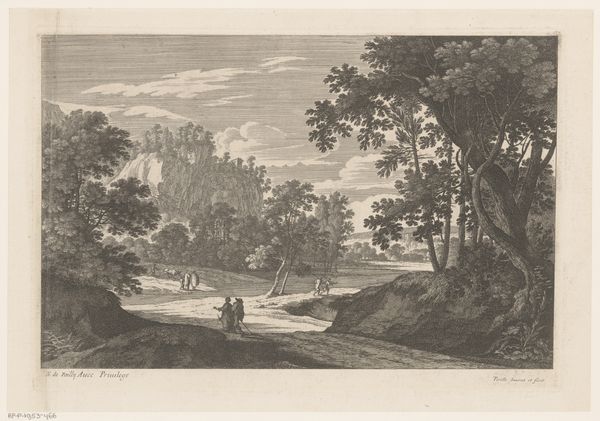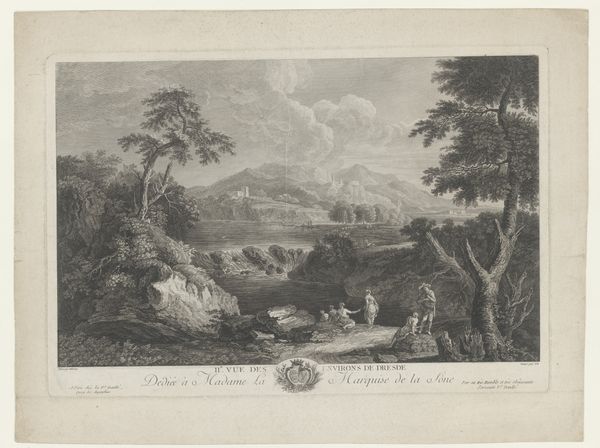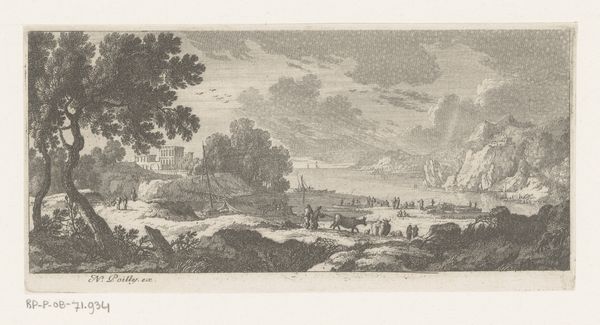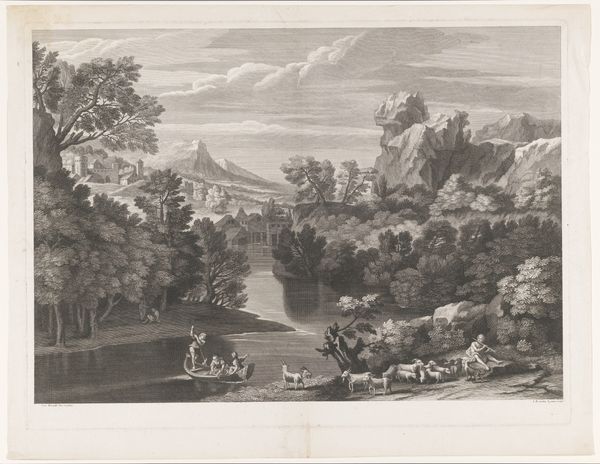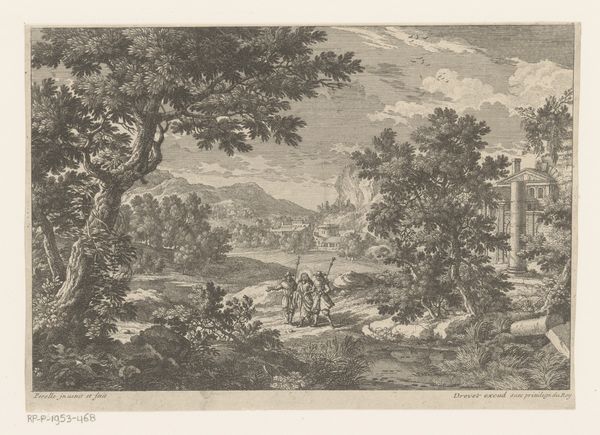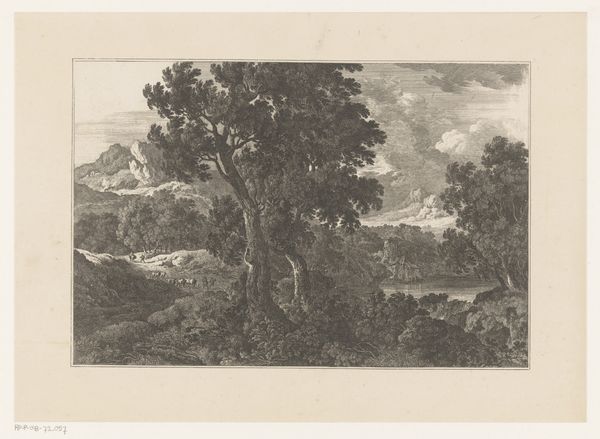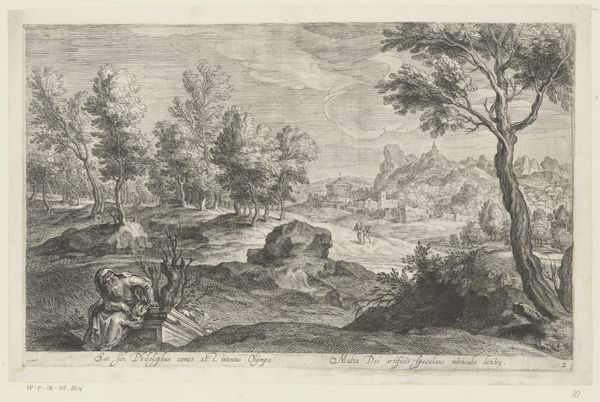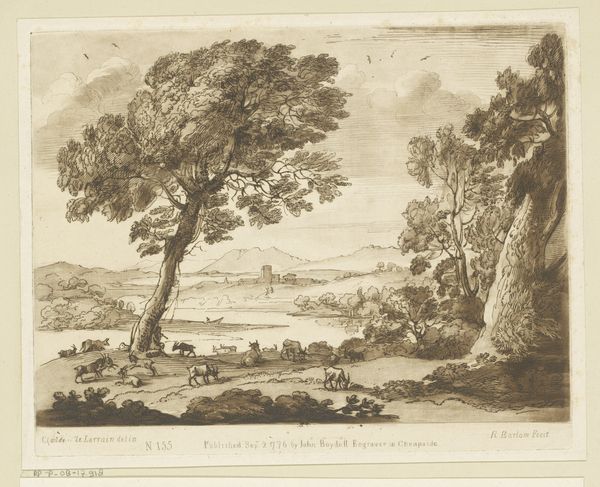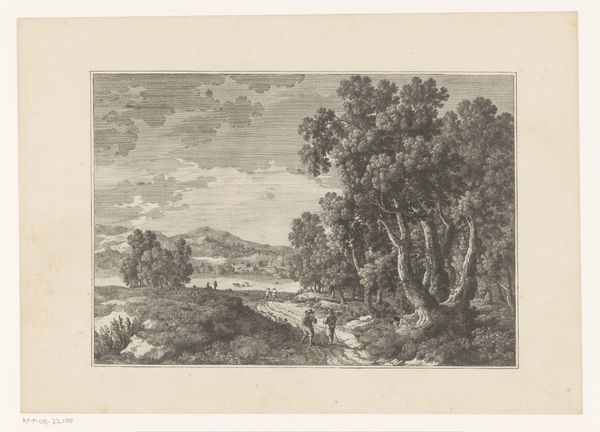
drawing, etching
#
drawing
#
baroque
#
etching
#
landscape
#
river
#
etching
Dimensions: height 196 mm, width 316 mm
Copyright: Rijks Museum: Open Domain
Editor: Here we have Nicolas Perelle's etching "Rivierlandschap met steiger", which roughly translates to "River Landscape with Jetty", created sometime between 1613 and 1695. There's a beautiful stillness to it, but the figures scattered around the jetty seem to be busy with something. How do you interpret this work? Curator: It's interesting to consider the landscape not merely as a backdrop but as an active participant in the social and political dialogues of the 17th century. These landscapes were often commissioned by the elite. Consider who had the resources to not only own land, but also commission art about it? How does the artist’s portrayal serve those patrons and possibly obscure the realities of labor, class, and access? Editor: So, you're saying the seemingly innocuous scene of people using a jetty could be tied to issues of land ownership and power dynamics? Curator: Exactly. This wasn't a neutral depiction; it was constructed. The very act of etching and distribution made such imagery accessible, further normalizing those hierarchies. Think about it, where would ordinary people situate themselves when looking at a piece of art like that, considering who were its initial patrons? Editor: That makes me rethink the whole piece! I initially saw the etching as pretty and quaint, but now I'm more conscious of its implicit biases and what the image-making actually conceals. Thanks, that was really insightful! Curator: My pleasure! Thinking critically about art involves questioning not only what we see, but how and why we see it. This deeper contextual approach enables art to facilitate the conversations of inequality and class struggle of the Baroque Era.
Comments
No comments
Be the first to comment and join the conversation on the ultimate creative platform.



